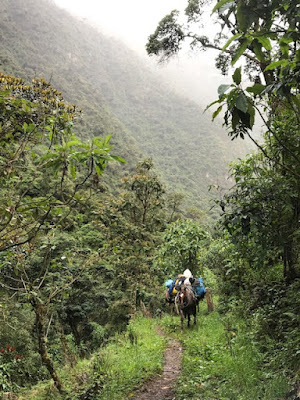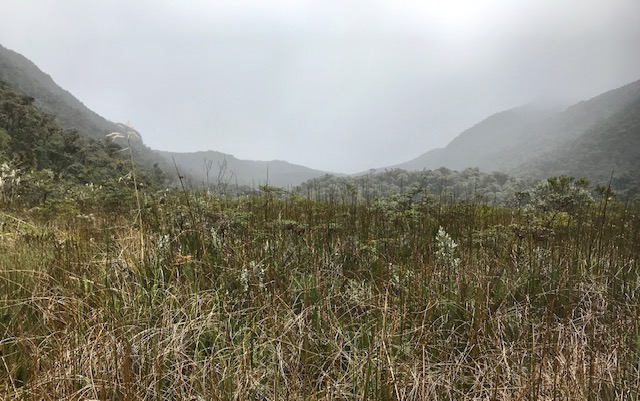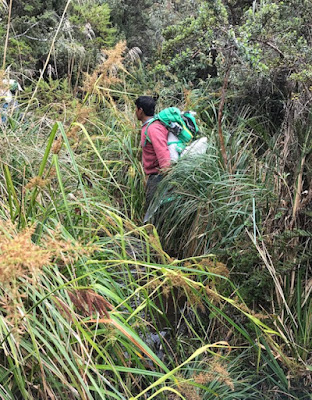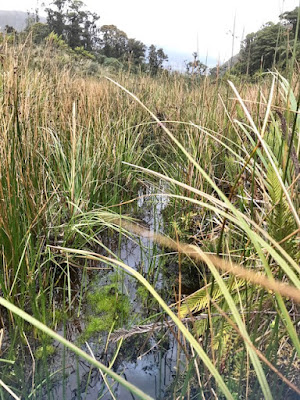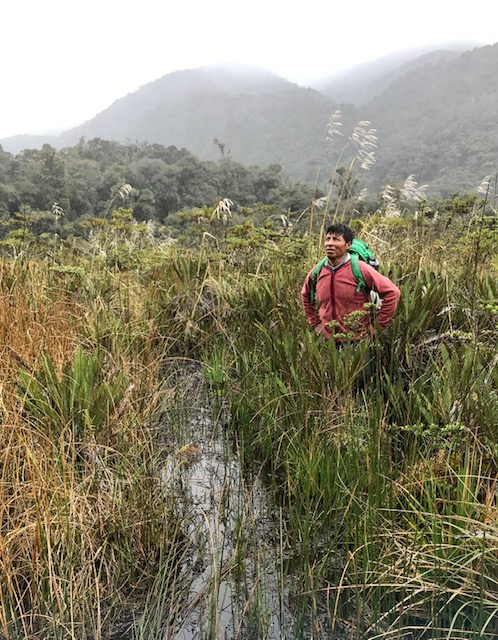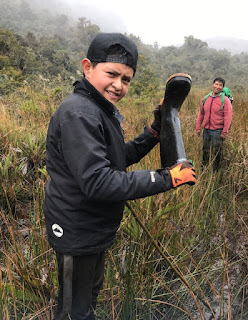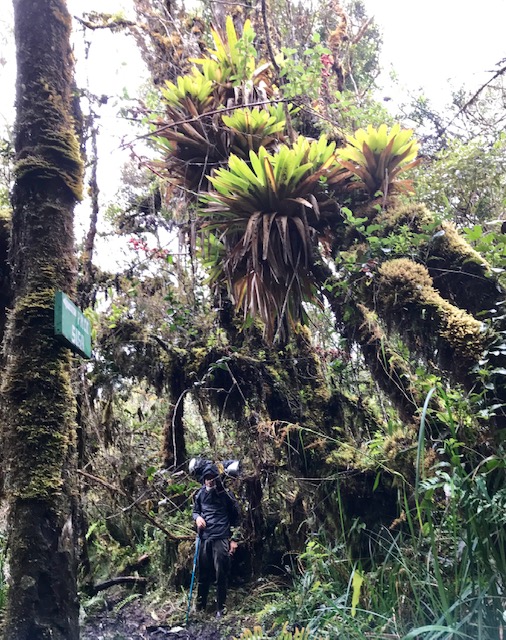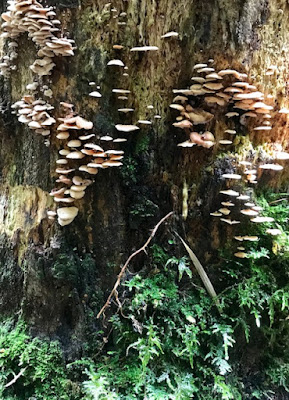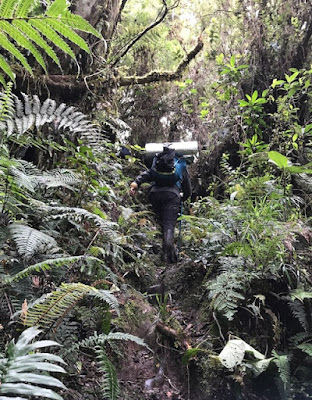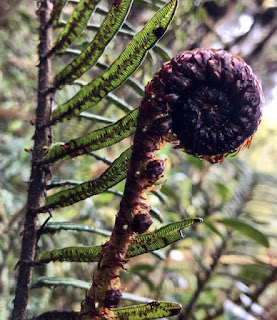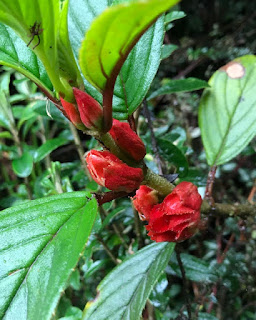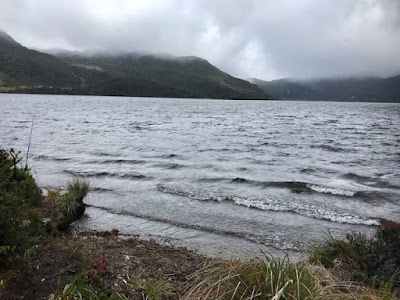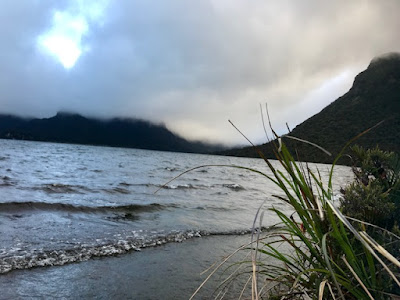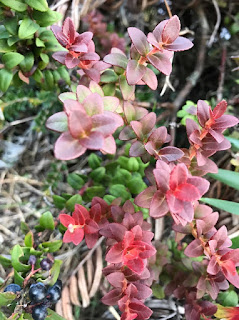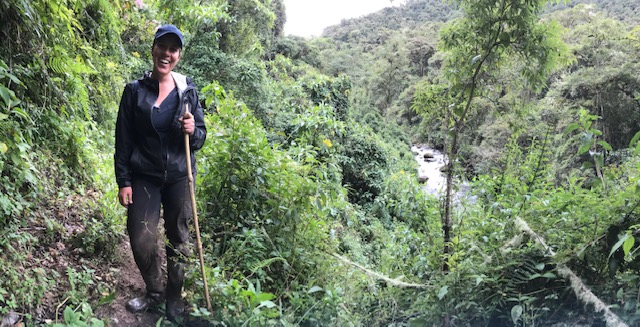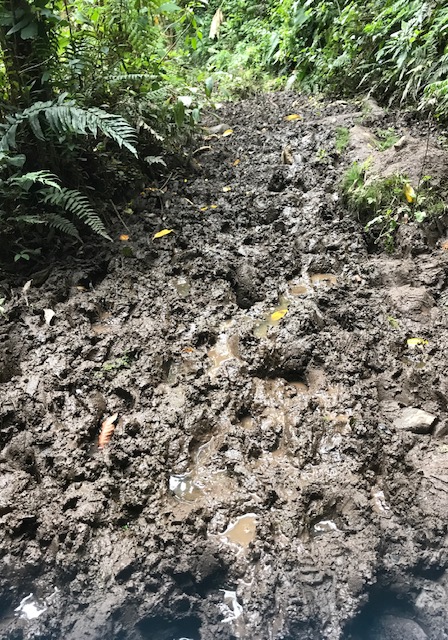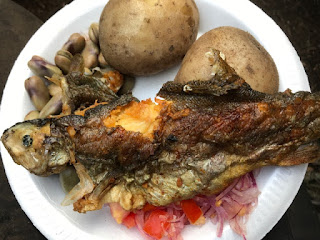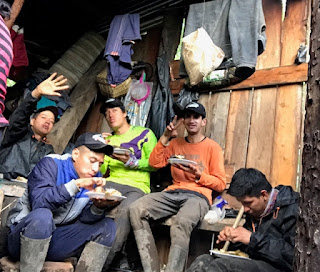| I watched this hiker seal his pants to his boots with a role of packaging tape. I think he was the only person in the group who arrived to the lake with dry feet! |
to cross. After several hours of slogging through the mud, we came into a large clearing.
Here it was…a high-elevation wetland or marsh. And the “trail” went right through it.
It didn’t take long for the guides to offer to carry my pack, and the packs of others.
It was obvious that we were going to get wet in this section. It was also getting late in the
day and we needed to hurry, so they figured we could move faster without the weight.
After a little while of hopping along, I did get our guide to talk some more. His name is Juan. He was born and raised in this valley, but then moved to Spain for ten years to work a variety of jobs. He missed this corner of Ecuador and the lake called to his heart to return. So now, he lives with his family on a farm at the trailhead, and he offers guiding services to the lake. He has everyone who walks the trail sign a registry. He reported that about 1,500 people visit the lake each year and he has personally hiked this trail over 100 times.
Later, Henry let me know that access to this lake is in large part because of Juan. He has spent most of his life trying to improve the trail by hand and educate others on the lake and the environment.
He recently applied for some help from the Ministry of Environment to help clean up the lakeshore and improve the trail. But building trail, gabion walls, and installing drainage ditches or culverts are not in the Ecuadorian vernacular. I wish I could send Juan to a National Forest Service training to help him know how to better improve the trail, and protect this fragile high-elevation environment in the process.
| Our ceremonial “We’ve Arrived” photo…. really, they had all been waiting for me. |
Once again, I felt so grateful for all the workers and volunteers that clean up the mess of others in our
National Forests and Parks.
were tiny little trout which he grilled on a little stick.
| Henry, Gabriel and Francisco enjoyed their trout. |



